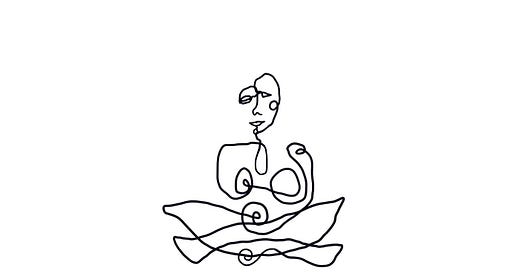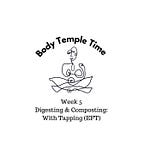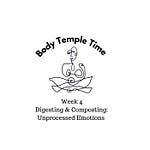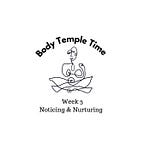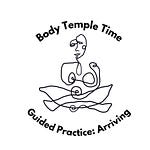Dear ones,
This is our final week of our Body Temple Time series! Our practice this week is dedicated to Receiving and Savoring the Good... and the advanced practice: Thanksgiving!
In the Bible, the Hebrew word for good is “tov” and it is used to describe something that is beautiful, life-giving, and morally good. It can also be used to describe God's harmony among plants, trees, and animals. An even fuller explanation of “goodness” is when something fulfills that which it was made to be. In this sense, goodness is wholeness, or that which encourages wholeness, fulfillment. It is not an abstract concept, but something we know by feeling it. The more we get tuned into the Good, and focus on feeling it, receiving it, savoring it, the more the Good can do its work in us.
“Hakaret hatov” are the words in Hebrew for “recognizing the good,” and to give thanks is “Todah” which is a more active word: it goes beyond receiving that which is good, and actively expresses thanks to the source of the goodness, which is always, ultimately, God.
Receiving and Savoring the Good is an active, sensory-rich experience. It changes us from within, bio-chemically, and in terms of our orientation to life, the development of our character. The more we somatically tune into the Good, the more nuanced we become in discerning that which is Good (in any particular time, place or setting), and the less we live by abstract rules and formulas. In Receiving and Savoring the Good we become more intimate with our own lives, more connected to our environment, and more heart fully present with the living beings around us.
It may come as no surprise that gratitude and thanksgiving are foundational spiritual practices in the Jewish, Christian and Muslim traditions. Gaining skill at recognizing the Good helps organize our lives increasingly around that which serves us and the common good. In active thanksgiving, we orient toward and reconnect to the source and Creator of life.
Receiving and Savoring the Good can also be paired with other aspects of Body Temple Time, such as Noticing and Nurturing, or Digesting and Composting. In these cases, when we are feeling into particularly painful or difficult experiences, sometimes we need to pendulum (swing) our attention back toward the good, or whatever feels safe, warm, vital, or like home. Sometimes, when we stay with a challenging experience with an attitude of care, or even love, we notice that the Good is all around and shining through that which is painful to bear. Receiving and Savoring the Good is not, therefore, at odds with the other aspects of our Body Temple Time practice, but it supports it. The Good is ever-present, and is here to help us digest, compost, and glean learning from life.
Dear one, I hope you have enjoyed this series of weeks building a Body Temple Time practice. It has been an honor to introduce you to my personal Body Temple Time practice.
If you have any questions, need support, or would like to know when I am teaching a live Body Temple Time class again, please don’t hesitate to email me back.
In love and faithfulness to our wholeness ~
Rev. Angela


